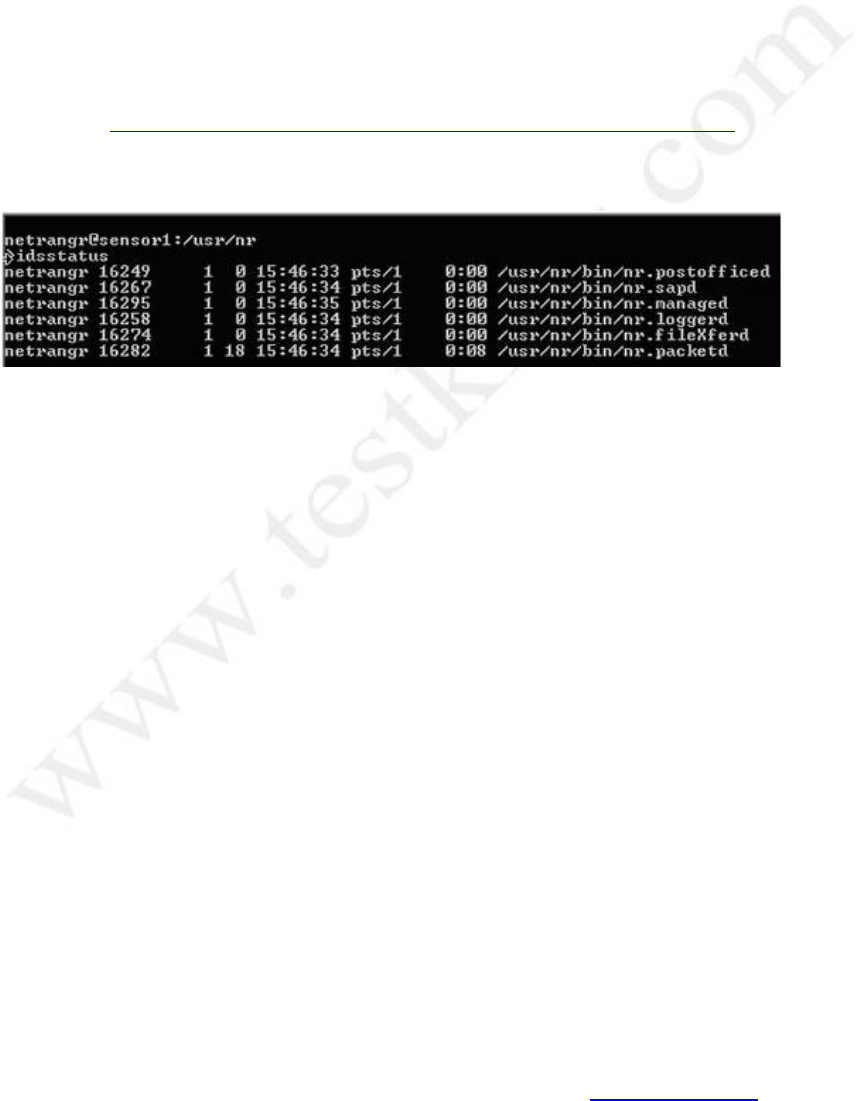Datasheet

9E0 - 100
Leading the way in IT testing and certification tools, www.testking.com
- 28 -
A. IDS Device Manager
B. IDS Event Viewer
C. Remote Shell
D. Secure Shell
E. Telnet
F. Trivial File Transfer Protocol
Answer: A, D, E
Explanation:
Enter or delete the IP addresses of hosts and networks that can access the sensor via Telnet,
FTP, SSH, and scp.
Reference: Cisco Intrusion Detection System Sensor Getting Started Version 3.1
QUESTION NO: 52
Exhibit:
Given the output of the idsstatus Sensor command, what function is the Sensor
performing?
A. Capturing network traffic.
B. Not performing IP blocking.
C. Not logging alarms, errors, and commands.
D. Generating e-mails for alarms.
E. Not capturing network traffic.
F. Loading alarms into a user database.
Answer: A
Explanation:
Postofficed The postofficed daemon serves as the communication vehicle for the entire Cisco
IDS product
Sapd - The sapd daemon is a user-configurable scheduler that controls database loading and
archival of old event and IP session logs.
Managed - The managed daemon is responsible for managing and monitoring network
devices (routers and packet filters). For example, when packetd identifies that a certain type of
attack should be shunned, it sends a shun command to managed via the post office facility.
Loggered The loggerd daemon writes out sensor and error data to flat files generated by one
or more of the other daemons.
fileXferd The fileXferd daemon is used for file transfer between Sensors and Directors. It is
used to transport configuration files between Directors and Sensors.
Packetd - The packetd daemon interprets and responds to all of the events it detects on the
monitored subnet.










